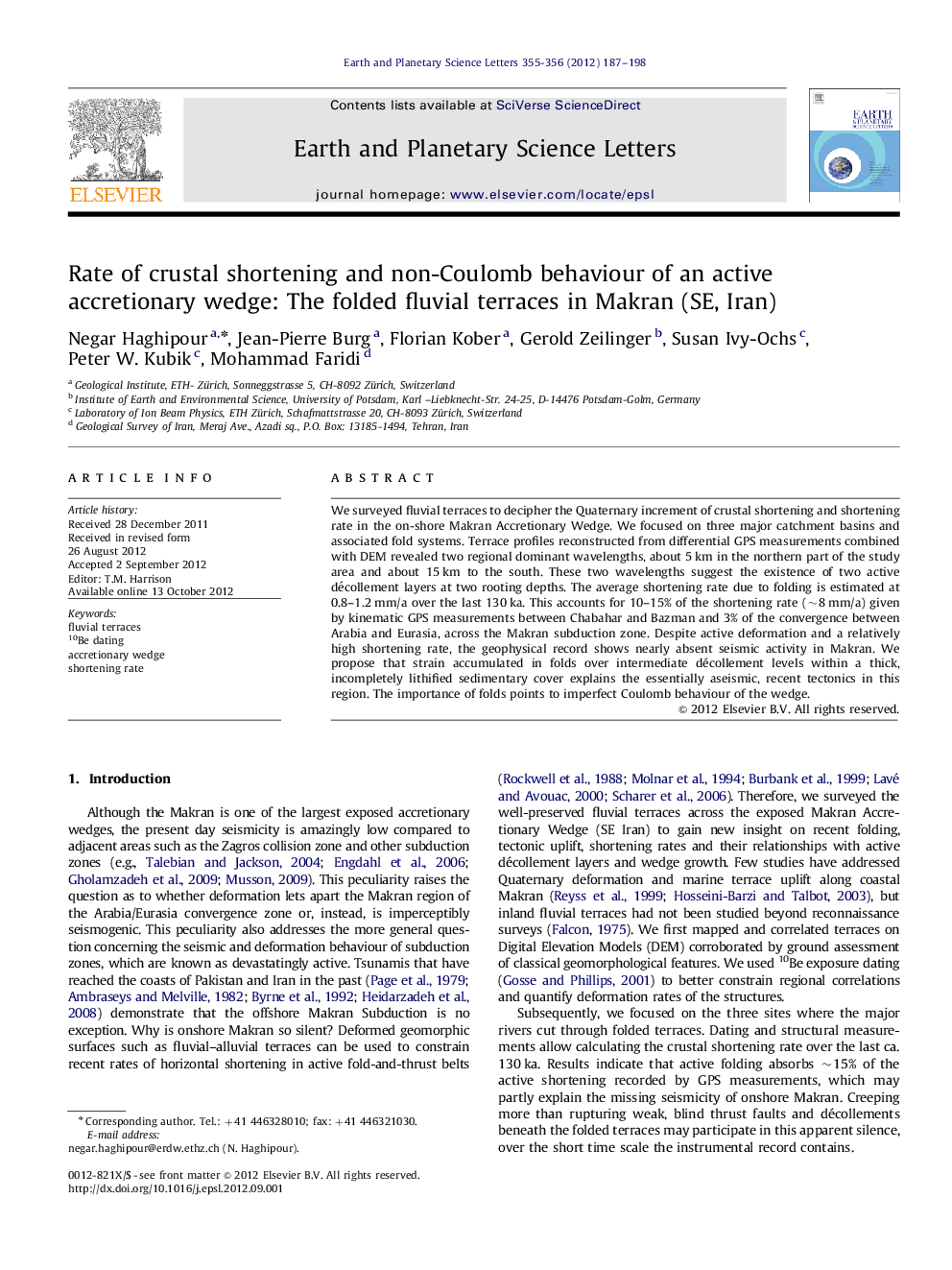| کد مقاله | کد نشریه | سال انتشار | مقاله انگلیسی | نسخه تمام متن |
|---|---|---|---|---|
| 4677370 | 1634795 | 2012 | 12 صفحه PDF | دانلود رایگان |

We surveyed fluvial terraces to decipher the Quaternary increment of crustal shortening and shortening rate in the on-shore Makran Accretionary Wedge. We focused on three major catchment basins and associated fold systems. Terrace profiles reconstructed from differential GPS measurements combined with DEM revealed two regional dominant wavelengths, about 5 km in the northern part of the study area and about 15 km to the south. These two wavelengths suggest the existence of two active décollement layers at two rooting depths. The average shortening rate due to folding is estimated at 0.8–1.2 mm/a over the last 130 ka. This accounts for 10–15% of the shortening rate (∼8 mm/a) given by kinematic GPS measurements between Chabahar and Bazman and 3% of the convergence between Arabia and Eurasia, across the Makran subduction zone. Despite active deformation and a relatively high shortening rate, the geophysical record shows nearly absent seismic activity in Makran. We propose that strain accumulated in folds over intermediate décollement levels within a thick, incompletely lithified sedimentary cover explains the essentially aseismic, recent tectonics in this region. The importance of folds points to imperfect Coulomb behaviour of the wedge.
► Fluvial terraces reveal active folding of the Makran accretionary wedge exposed in Iran.
► Fold-related shortening rates are homogeneously distributed since the Late Pleistocene.
► Mean shortening rates account for much of the GPS displacement rates across Makran.
► Structural softening due to folding explains the recorded seismic deficit.
► Active folding points to imperfect Coulomb behaviour of the exposed Makran wedge.
Journal: Earth and Planetary Science Letters - Volumes 355–356, 15 November 2012, Pages 187–198